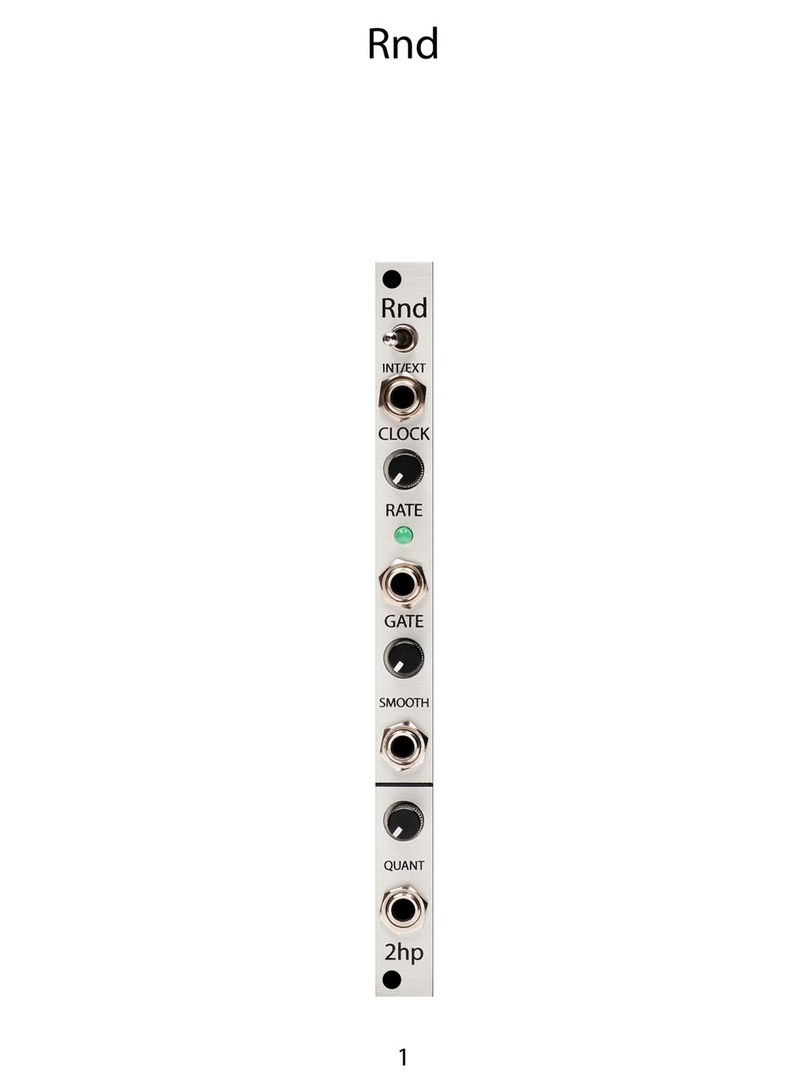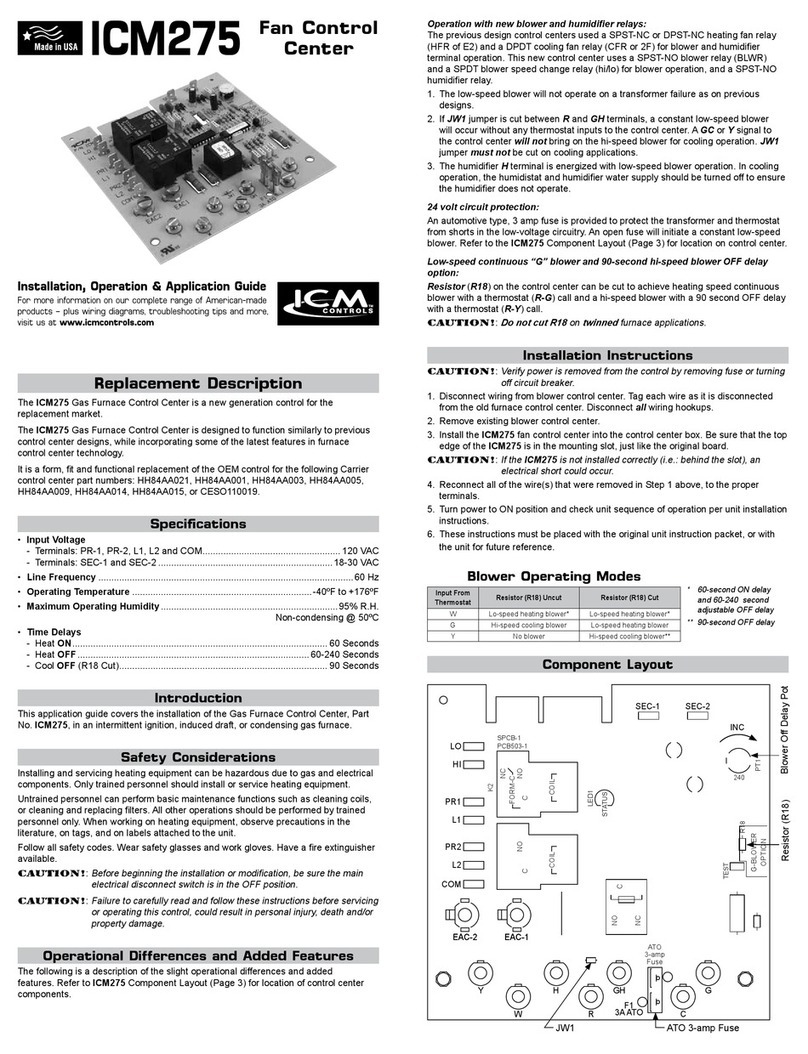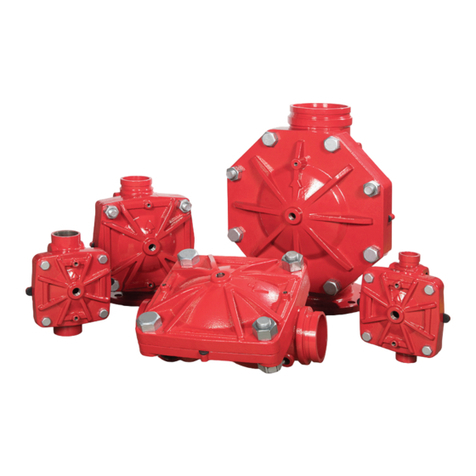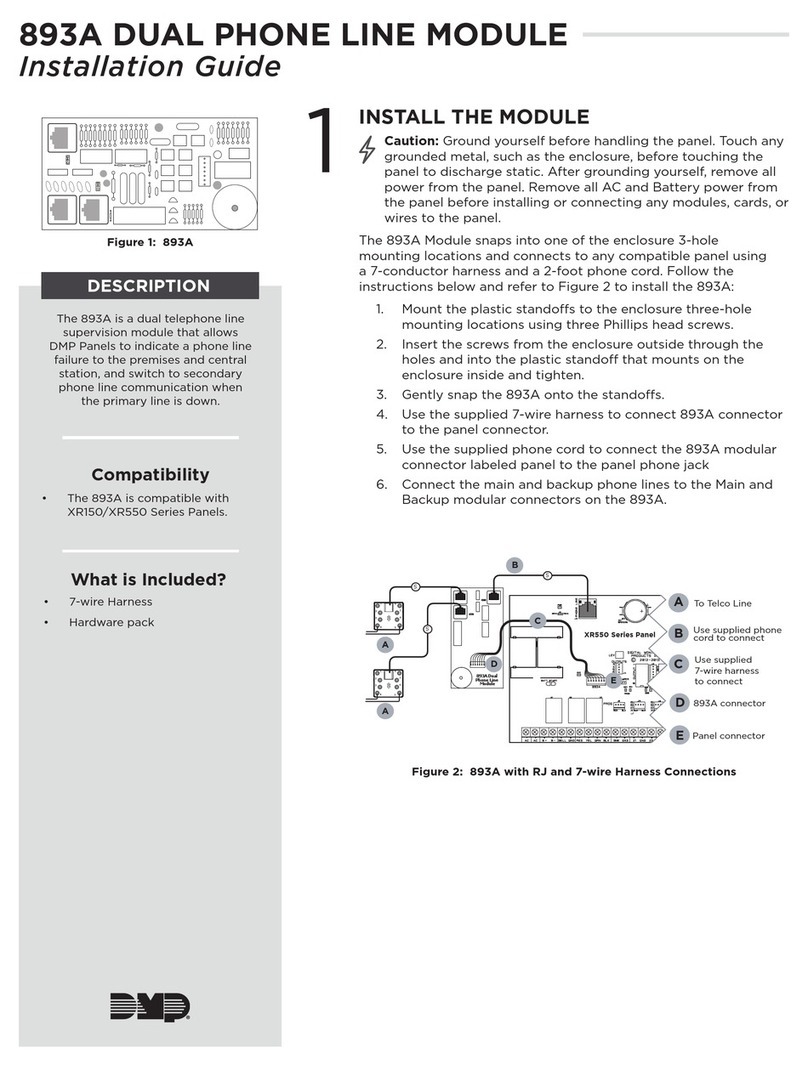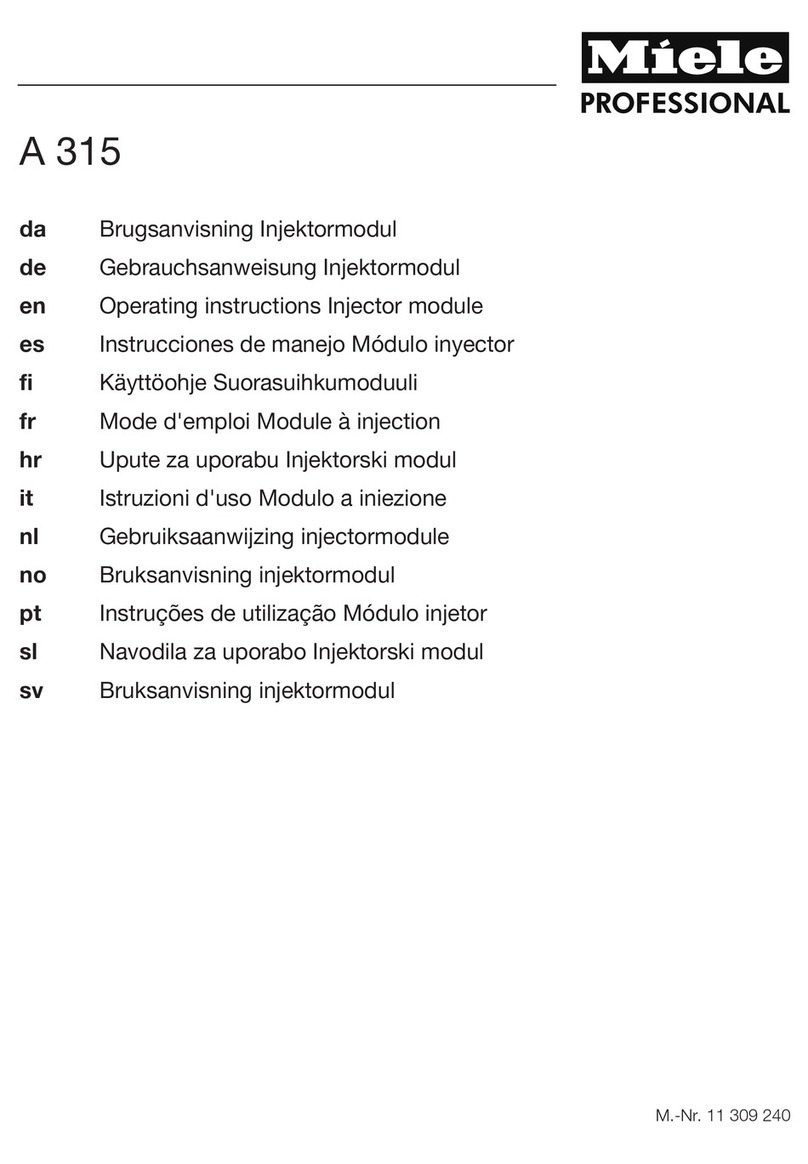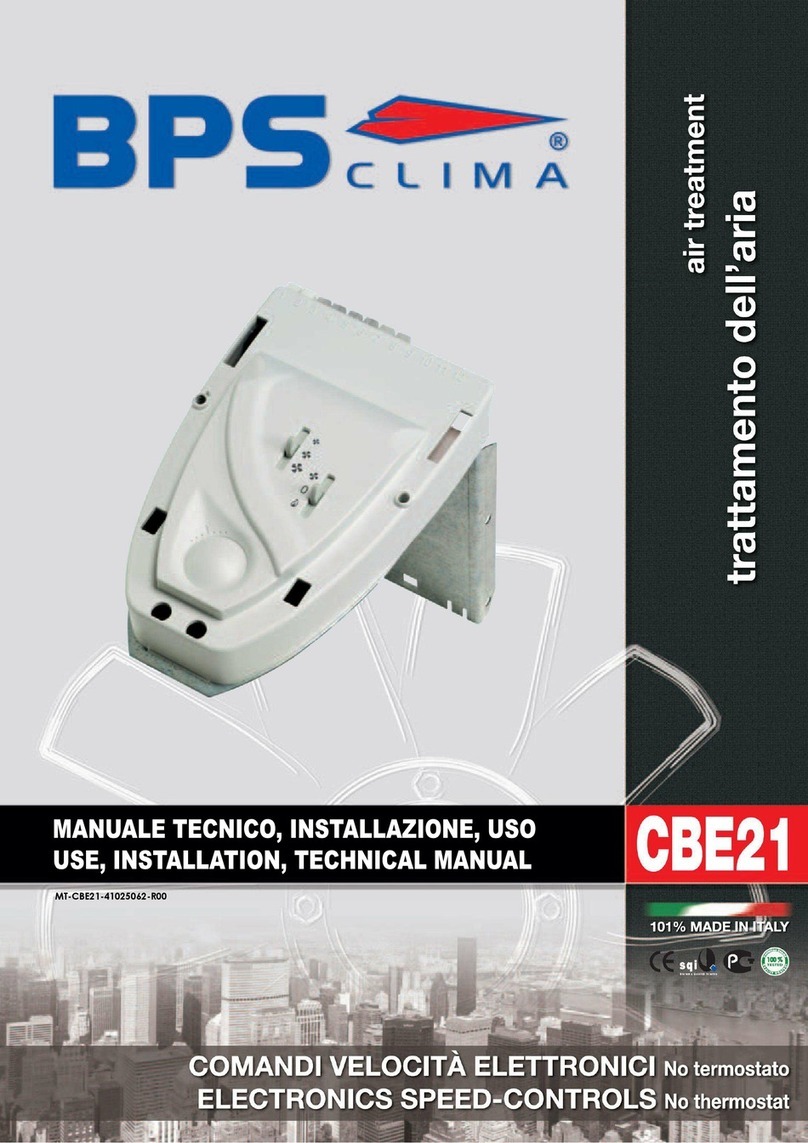Steady State Fate Mixmode Parts list manual

Control and function reference guide
TECH SPECS
Width......................6hp
Depth, Max.............23mm
Current Draw
Quiescent...............+/-37mA
Peak......................+/-39mA
SIGNAL LEVELS
All inputs can be safely overdriven
without phase reversal. Inputs accept
all nominal modular voltage levels.
Attenuator input headroom is ~1.2V
below/above +/- rail voltage. Mixer
output headroom is ~0.7V
below/above +/- rail voltage.
Minimum saturation level using
trimmers is roughly +/-3.8V. Maximum
is roughly +/-10V.
Out of range CV levels produce a
bipolar compression and oset eect
on the saturated signal.
DC input impedance: ~100kOhms
Output impedance: ~1kOhms
Thank you for purchasing the Steady State Fate MIXMODE.
Utilizing some of the best performing components available, MIXMODE denes a new level of quality standard at an aordable price. MIXMODE is a very high
delity quad precision attenuator, inverting attenuator, mixer, adder/subtracter, signal polarity/level indicator and unique user congurable bipolar saturater.
The high grade components provide very low noise and distortion as well as low oset voltage, exhibiting very low error as an adder subtracter and other
precision duties. MIXMODE is assembled on a 4-layer PCB which provides superior isolation from line noise.
Please read this manual at least once and use it as a reference to get the most out of MIXMODE. Enjoy!
1
8
5
INPUT
There are four inputs to MIXMODE. They are DC coupled, meaning that both audio and control voltage signals can be processed by the attenuator and
inverter . And through the mixer.These inputs are immune to phase reversal and exhibit slightly higher input headroom than most eurorack modules.
ATTENUATOR
There are four attenuators, each providing a level control for your signals. Signals will be fully silenced when this control is turned all the way to the left.
Signals will be unaected when this control is turned all the way to the right. However, MIXMODE will buer your signal, allowing it to drive at least four
destinations without signal degradation. Actual number may vary depending on the destination’s input impedance.
2
3
NORMAL/INVERTED SWITCH
There are four Normal/Inverted switches. NM is short for Normal or unaected and INV is short for Inverted.This function will invert the polarity of your
signal, ipping it along the horizontal axis at 0V (ground potential). When processing control voltages or audio, you can quickly and alternatively know
the polarity setting by viewing the RGB indicator for the respective channel. For adding and subtracting applications, use NM to add and INV to
subtract the respective signals in the mix.
2
3
4
5
6
7
1
MIX/ATTENUATOR OUTPUT SWITCH
This switch only applies to channel 4 of MIXMODE. It determines the function of the channel 4 output. When in Attenuator mode (ATT), this output functions like
the other outputs and specically as channel 4’s attenuator output.When switched to MIX mode, this output becomes the total mix of all four channels of
MIXMODE. If the other channel’s output jacks are used, the PCB jumper section as explained on page 2 will determine if that channel is included in the mix.
Like the individual attenuator sections, the mix is provided by a high bandwidth, high slew rate op amp. This device also provides higher headroom than most
eurorack modules so be careful when feeding the output into other devices - as they may overdrive an input, even if the total mix is not clipping.The max
headroom of the mixer is approximately 0.7V below/above the +/- rails and will depend on the actual rail voltage - which can sag depending on supply loading.
The mixer is optionally fed into two selectable circuits. One is the clean/high headroom just explained and the other is a unique and colorful user congurable
saturater. See and page 2 for details.
OUTPUT
There are four outputs, each is numbered in reference to the respective input. This is where the buered and processed signal is available for each channel.
There are two optional actions pertaining to the mix that will occur when a jack is patched into outputs 1-3.The options are that (A.) the signal remains in the
mix and (B.) the signal is removed from the mix. These options are selected individually for channels 1-3 via PCB jumpers. See page 2 of this manual for details.
Output 4 provides two functions. See for more information on output 4’s functioning. Output headroom is ~0.5V below/above the +/- rail voltage.
RGB SIGNAL POLARITY INDICATOR
There are four RGB signal polarity indicators, one for each channel. These LED light-pipes provide signal amplitude and polarity indication via a three color
viewing system.
While in normal mode (NM), positive signals appear BLUE and negative signals appear RED. For audio rate signals, the color will shift from bright PINK to PURPLE
to CYAN. The shade of color is indicative of the signal’s oset or weight in the positive or negative regions. More blue means the signal is more positive, more red
means the signal is heavier or oset towards the negative region.
While in inverted mode (INV), processed** positive signals appear GREEN and processed negative signals appear RED. This color assignment allows for quick
conrmation that slow signals have inverted since if the indicator is red, it will switch to green and if blue, it will switch to red. The change will be obvious for
audio rate signals, which appear YELLOW when inverted mode is selected. The signals shift from dark or BLOOD ORANGE when oset or heavier in the negative
region, i.e. more red. And shift up to a LIGHT GREEN for the positive excursions, i.e. more green.You will nd that the colors are quite indicative of the signal’s
behavior and a beautiful way to envision the sound :-)
**Please note this is not to be confused with the polarity of the actual input signal before processing, i.e. inverting the signal.
CLEAN/SATURATED SWITCH
This switch selects the circuitry for the total mix. Clean mode (CLN) is the natural and unaected output of the high delity mixer. Use this mode for one of
the cleanest and best sounding compact mixers available. Saturated mode (SAT) switches on MIXMODE’s proprietary bipolar saturation circuitry. The
clipping threshold is independently adjusted for the positive and negative signal excursions via PCB trimmers on the back of MIXMODE. Please see page 2
for details on how to congure this setting - or leave it as is; specially tuned by SSF. The MIXMODE Expander brings the saturation adjustments to dedicated
panel controls. Additionally, the expander provides independent voltage control over all saturation parameters! More details for the saturater on page 2.
Rev Polarity Protected
RoHS & CE compliant
3
2
4
7
6
5
6
7
8POLAR SATURATION INDICATORS
These LEDs are visual indicators of the saturater at work. They are the actual LEDs used by the saturation circuitry! The glow you see is your signal owing
through these beauties.The brighter they are, the more of your signal is being soaked and drenched in pure saturated bliss!

+10V
-10V
0V
+5V
(+/-5V signal, full +saturation) (+/-10V signal, full +saturation) (+/-10V signal, - VC+saturation)
FULL SATURATION WAVEFORMS - POSITIVE ONLY
The graph to the right illustrates the eect of the saturater at the lowest
clipping level. Only the positive saturater is shown as the purpose is
simply to illustrate the eect of the saturation circuitry. The rst half of
the wave cycle for each example is the unaected triangle wave. The
second half is the positive only saturated waveform.Three examples are
shown to describe the eect of saturating higher amplitude signals and
how the saturater works while under the inuence of voltage control via
the MIXMODE Expander.
Example a. and b. are both produced using the PCB trimmers or the panel
The SCIENCE of the MIXMODE SATURATER
MIXMODE features a unique saturation circuit. Saturation and distortion are useful tools for additive synthesis. The simplest way to add distortion to a signal is to amplify it enough to exceed the input level of active devices such as
transistors and operational ampliers. While transistors and other discrete semiconductors produce a natural soft saturation when overdriven, op amps will often clip rather abruptly. This is known as hard clipping and can be very
useful for adding serious distortion and wave shaping into square-ish waveforms. Without getting too technical, it should be mentioned that the square wave can be constructed by summing all the odd order harmonic frequencies. In
other words a series of sine waves beginning at the fundamental, combined with every other harmonic at specied amplitudes will eventually produce the square wave shape. For more details on this amazing phenomenon, study the
Fourier series expansion of periodic functions. In fact, given that the sine is a pure tone, all known waveforms can be decomposed into a series or sum of sine waves - these are the harmonics or overtones we hear in sound. By extension
of this phenomenon, clipping distortion adds harmonic content the further and harder a signal is driven into clipping - thereby producing a near square like function. But the function is never really a square so a variety of overtones,
odd and even are heard in dierent amounts when we distort dierent waveforms. Composing a series of even ordered sines will result in asymmetric waveforms.Therefore, we can accentuate the even harmonic content of a signal
with asymmetrical distortion. We can accomplish this by simply choosing to only clip the negative half of the waveform for instance.The order of the harmonic content is directly related to the tonal qualities of the sound. Odd
harmonics are found in bell tones and generally an-harmonic sounds like metal bangs and clangs and heavy metal guitar chords. The even harmonics are very sweet and musical, very melodic. So by arbitrarily clipping signals both
symmetrically and asymmetrically, we can control the level of harmonic content we would like to add to a sound.While hard clipping is a very easy way to add harmonic content, sometimes it can produce too many overtones too
quickly to provide a wide variety. A soft clipper is known to be more musical because the signal will not atten out so abruptly. This produces less overall harmonic content and allows the even ordered tones to be more audible.This is
why tube distortion and germanium clipping are known as sounding sweet, rich and musical. This is also where MIXMODE’s saturation circuitry excels. The saturater exhibits a mix between the very soft saturation of a transistor at
higher clipping levels then into a soft diode clipping and into harder clipping when driven much further at the lowest threshold levels. Additionally, MIXMODE’s saturater tends to leave some of the original peak content intact but
compressed. All this allows for a wider range and variety of harmonic content to be revealed.The results are more useful than traditional clipping distortion. The independent control over the positive and negative threshold level adds
even more tonal variety. In fact MIXMODE's saturater is so deep that the eect is similar but in some cases richer than phase shifting as the threshold is modulated.The saturater works like an anti-lter; adding harmonics rather than
removing them!
See the graph below for an example of what MIXMODE’s saturation looks like when applied to a triangle wave. Only the positive half of the triangle wave is saturated for clarity.
a. b. c.
controls of the MIXMODE Expander. Example c. Illustrates the eect of voltage controlled saturation. The modulation behavior for the positive (+)saturater works like the PCB/panel controls starting from a 10V CV level down to about 0V.
The CV will continue to clip the positive peak below 0V but will squeeze and oset into the negative half with the applied negative CV levels. The graph c. highlights this eect. Oset is not shown for clarity. This behavior is mimicked by
the negative CV input but for opposing CV levels. As a result, a greater range of tones and eects are possible when control voltages are used to modulate the saturater.
ADJUSTING THE SATURATER
If you would like to change the saturation setting to your preference without the MIXMODE Expander, the adjustments are very easy to perform. On the back of MIXMODE you will notice the two large blue trim pots with a grey Phillips
head center. Simply use a small Phillips or Flat head screwdriver to rotate the trim pot to your desired threshold level. Fully counter clockwise is approximately 10V and fully clockwise is about 3.8V. You can perform this adjustment
while the unit is powered and a signal is present and monitored at the mixer output.The top trimmer adjusts the positive, and the bottom trimmer the negative signal excursions.
CONNECTING THE EXPANDER
The MIXMODE Expander adds a whole new dimension to the saturation possibilities and adds dedicated mixer outputs.
Connecting the Expander is straight forward. Remove the four jumpers from the expansion header on the back of MIXMODE. Put them aside in a safe place. Locate the expansion cable that came with your Expander module. Note the
RED stripe on the expansion cable. Attach the expansion cable to the Expander with the RED stripe facing down towards the bottom of the module. Take the other end of the cable and attach it to the expansion header on MIXMODE
with the RED stripe facing down - towards the bottom of MIXMODE. Now with the back of both modules facing you and oriented in the same direction, the RED stripe should be facing the same direction on both modules. If they are,
you are almost done. The last step is to turn both saturation trimmers all the way clockwise.When completed, you are ready to connect power as directed above and use the expander with MIXMODE!
BEFORE YOU BEGIN - CONNECTING POWER
Before using MIXMODE, you must rst connect the power cable correctly. Locate the small connector end of the power cable and take note of the RED stripe on the cable. Connect the small end of the cable to the power header on
MIXMODE with the RED stripe down towards the bottom of the module. Double check that this is the case before installing and powering up your module. Connect the other end to your power bus-board with the RED stripe aligned
with the -12V (negative 12VOLTS) rail marking. MIXMODE is reverse polarity protected so mistakes will be forgiven however it is good practice to always take special care when connecting power to Eurorack devices. Some are not so
forgiving!
Please be sure not to confuse the expansion header marked‘expansion’for the power header which is marked‘power’. The expansion header also contains four jumpers. Do not remove these unless you are connecting the Expander as
described below.
WARRANTY/GUARANTEE
MIXMODE is covered for defects and malfunctions for one year after purchase. However we are happy to help you out with any problems beyond this time-frame. As with all SSF designs, we will take good care of you!
Please be kind to your modules and do not abuse them.Treat them with love and respect and they will return that love many orders of magnitude greater for a lifetime. Enjoy! <3
CHANNEL OUTPUT JUMPER OPTIONS
Jumpers selectors are provided for channels 1-3.These two pronged jumper selectors are shipped with the option to select each channel to be removed from the mix when a patch cable is inserted to the respective output jack. If you
wish to change this behavior on one or more channels, simply remove the jumper or move the jumper over so that only one prong is connected to the jumper. This way the jumper stays in one place and can be easily switched back on if
desired. Can’t decide which option is best for your needs? Here are some reasons to help you decide. For choosing to leave a signal in the mix, this will allow you to mix a signal and separately patch the signal out to another destination
while the attenuator controls the output level and the level in the mix. This is great for combining CVs while patching them individually out.
Selecting to remove the signal from the mix will allow you to create small mixes and use the attenuators separately. This is useful is a small system or if more than one function is needed at a time.You could also use one channel as a
master volume control for a mix of three or less channels.
Other Steady State Fate Control Unit manuals
Popular Control Unit manuals by other brands
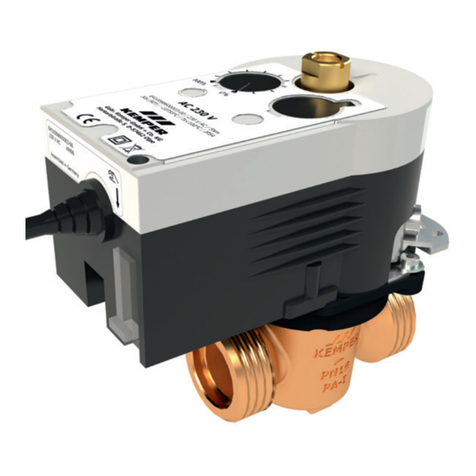
Kemper
Kemper kHS 686 00 Installation and operating instructions

Innophase
Innophase Talaria TWO Hardware user's guide
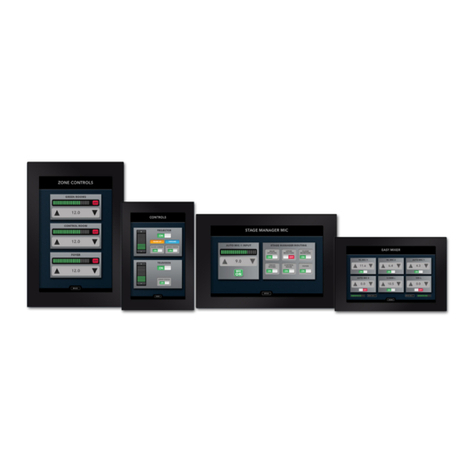
Xilica Audio Design
Xilica Audio Design XTouch Series: XTouch50 user manual
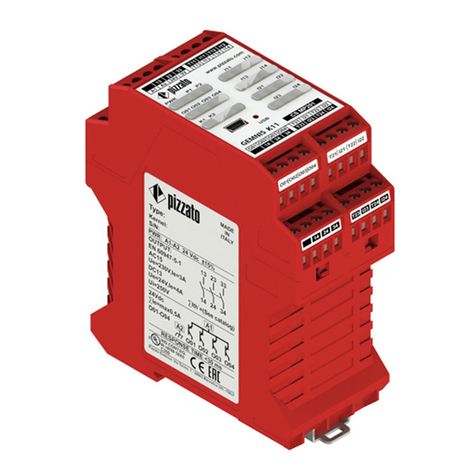
pizzato
pizzato CS MP201M0 quick start guide
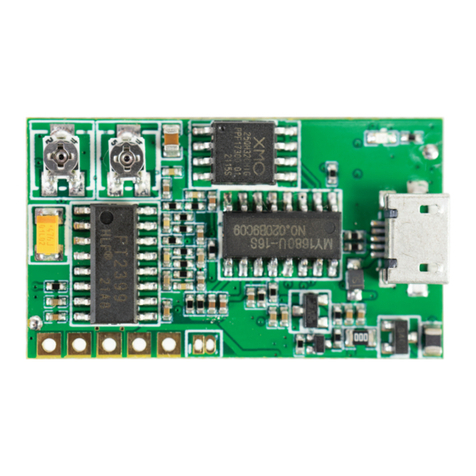
PNI
PNI ECH01 user manual
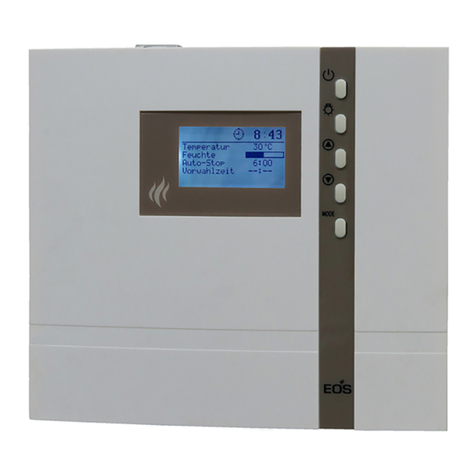
EOS
EOS ECON H2 Assembly and operating instructions
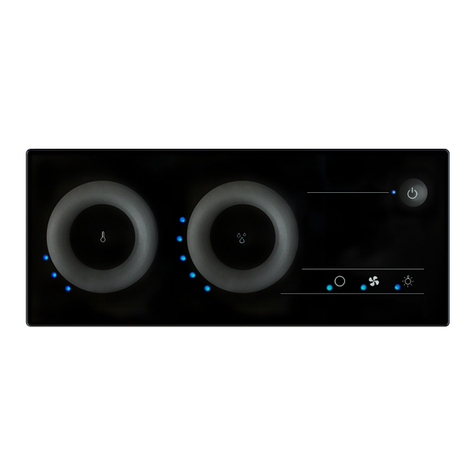
Sentiotec
Sentiotec just sauna combi series Instructions for installation and use

Ellard
Ellard CITY1-EVO manual

Homematic IP
Homematic IP HmIP-MOD-TM quick start guide
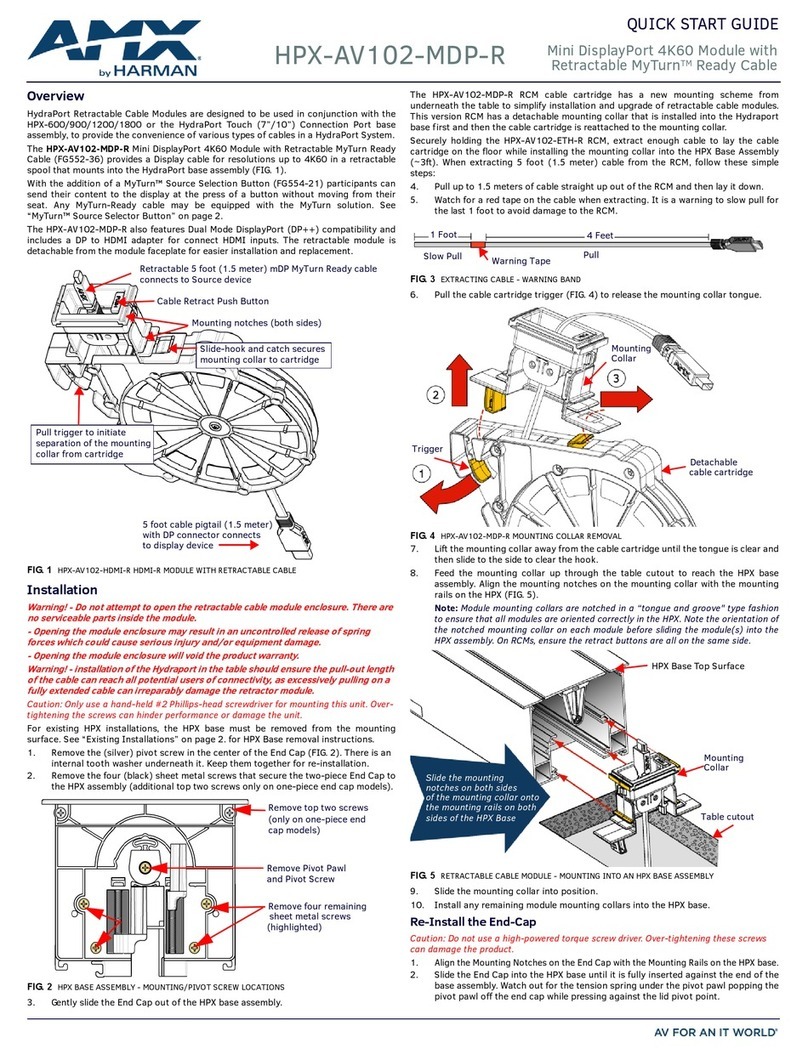
Harman
Harman AMX HPX-AV102-MDP-R quick start guide

Allied Motion
Allied Motion SPECTRUM CONTROLS 1769 user manual

CIRCUIT DESIGN
CIRCUIT DESIGN CDP-RX-07MP Operation guide
